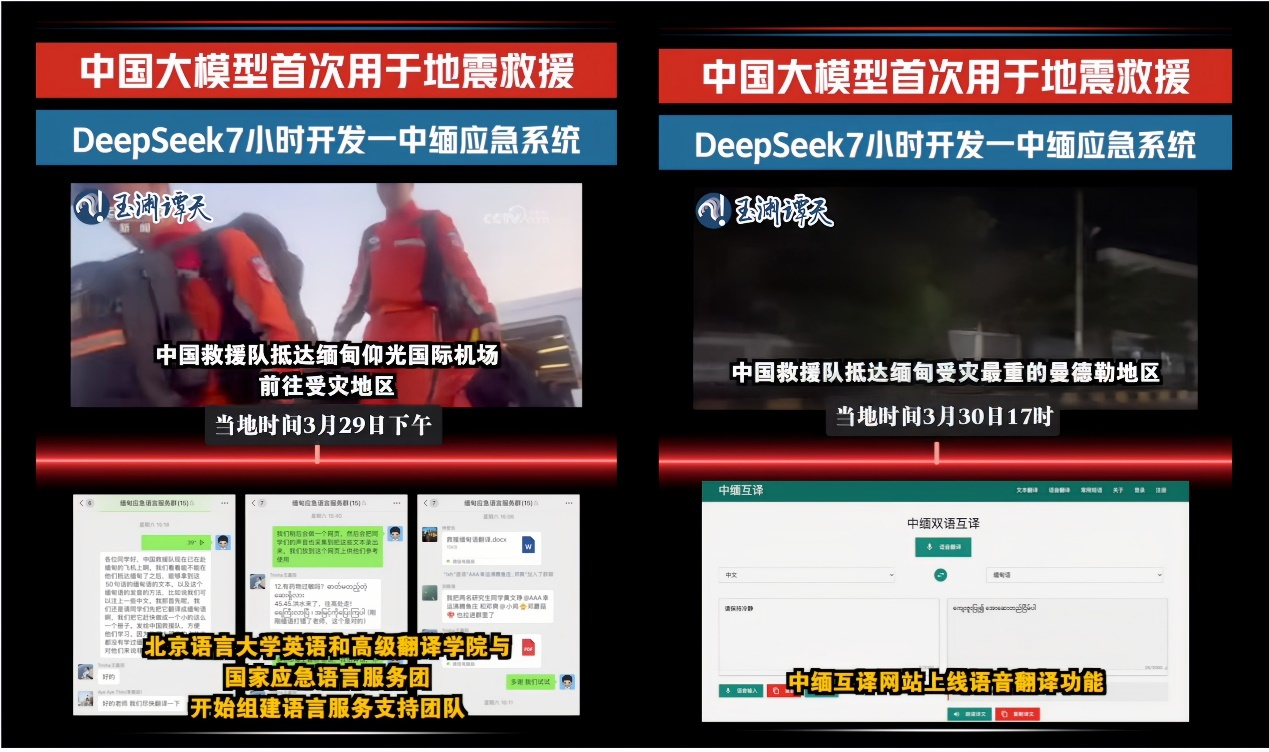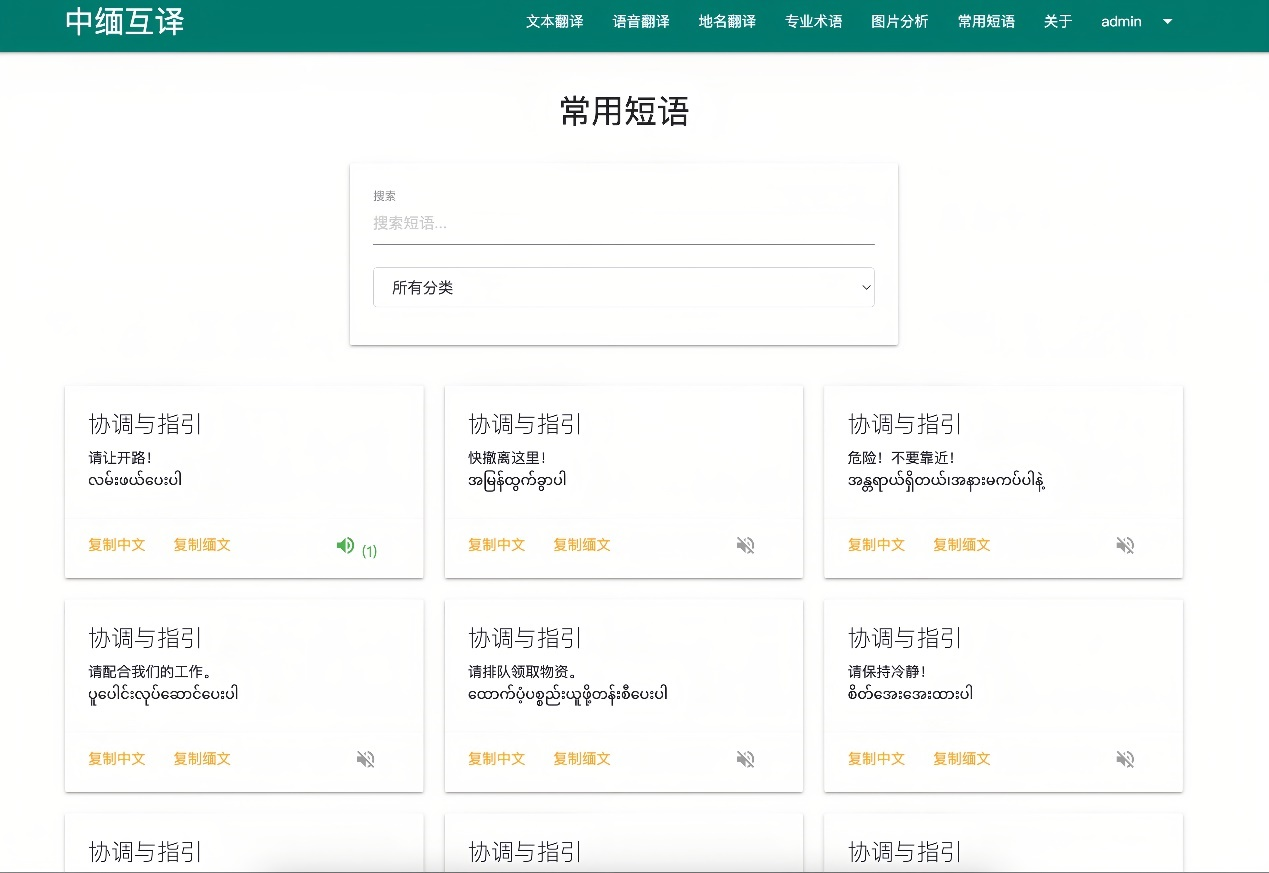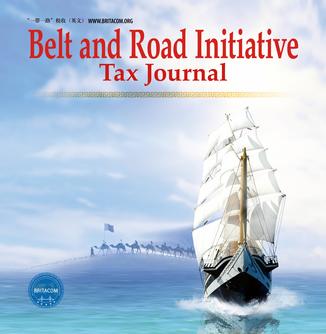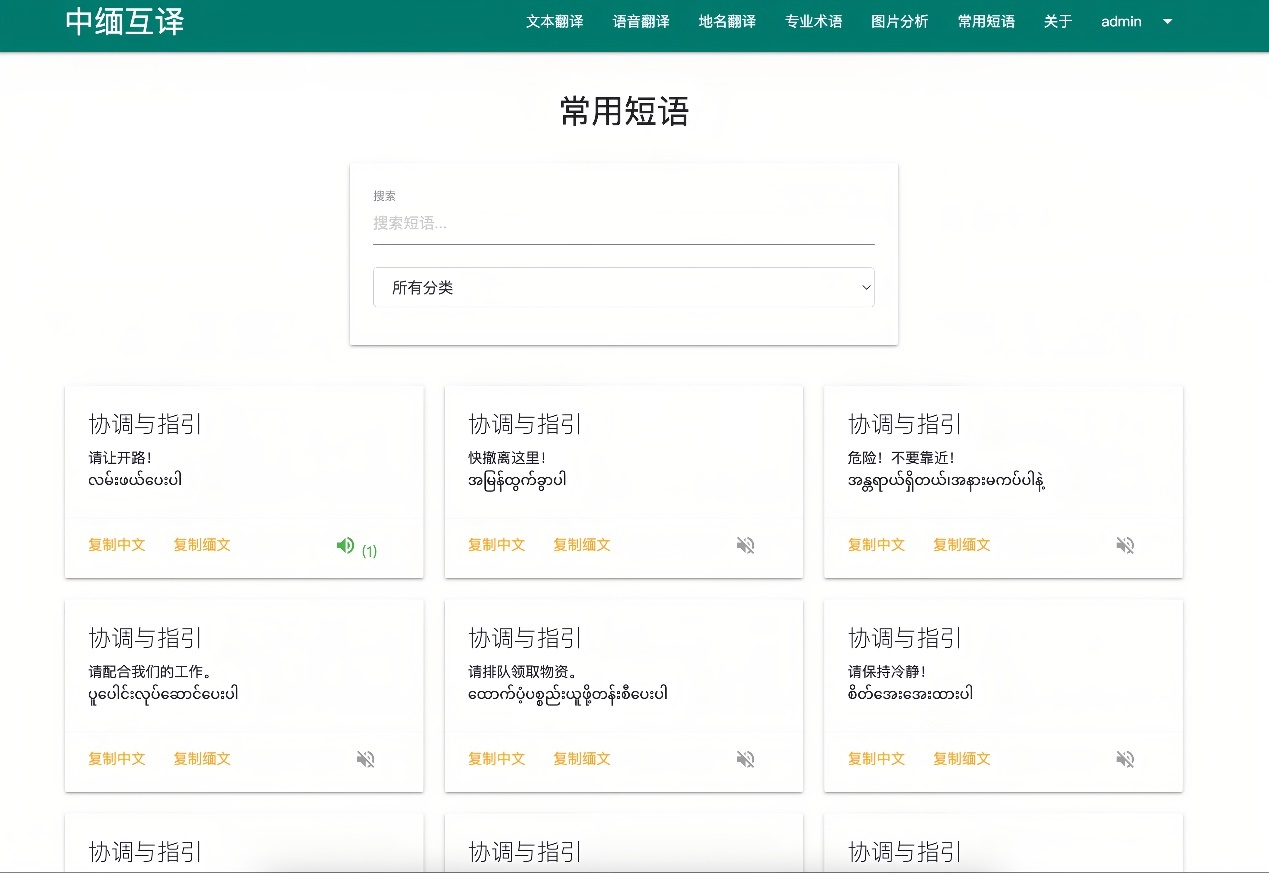
Four Myanmar students participating in the development of the Chinese-Myanmar-English translation system (Photo provided by Beijing Language and Culture University)

The urgently developed Chinese-Myanmar-English translation system (Photo provided by Wechat account @Yuyuantantian)
On March 28, 2025, a powerful 7.9-magnitude earthquake struck Sagaing Province in central Myanmar, causing the ground to shake violently and buildings to collapse.The Chinese government promptly activated its emergency response mechanism, and rescue teams were quickly assembled and dispatched to the disaster area to carry out rescue operations.
In this international rescue operation, the obstacles between the rescue teams and the quake-hit people were not only the piles of debris but also an invisible "language barrier". At this critical moment, an original technological achievement that was developed and deployed in no more than 7 hours under extreme conditions – a Chinese-Myanmar-English translation system based on the DeepSeek, the Chinese large language model (LLM) - was pushed to the front line of the rescue efforts, embarking on its first "real combat" in the history of human life-saving relay.
Tech Sprinter Paves Way for Faster Rescue in Quake-hit Myanmar
The communication system in the disaster-stricken area was severely damaged, and the people of Myanmar could only try to contact the outside world by sending brief distress messages. The Myanmar language itself is complex and has many accents, and in the earthquake rescue scenario, many languages are incomplete. Moreover, it involves a large number of professional terms, making traditional translation software completely unable to handle it, and on-site communication almost came to a standstill.
To seize the 72-hour golden rescue period, the Language Information Management Department of the Ministry of Education of China guided the Secretariat of the National Emergency Language Service Team to quickly form a language service team, supporting Associate Professor Han Lintao of Beijing Language and Culture University to develop an efficient, practical and implementable emergency language service system for Chinese-Myanmar-English translation in the shortest possible time.
"Traditional machine translation relies on local knowledge bases, and it is difficult to achieve precise translation in professional scenarios," Han Lintao recalled. Therefore, he considered integrating large language model technology into the translation system to improve the accuracy and efficiency of translation.
The language service team first used multiple artificial intelligence models such as DeepSeek and ChatGPT to generate 50 sets of professional earthquake rescue texts. After evaluation, the DeepSeek model was finally selected. After 7 hours of continuous research and development, the Chinese-Myanmar-English translation website was finally launched at 22:52 on March 29, 2025 and delivered to the Chinese rescue team through the emergency management department. At 22:43 on March 30, the website launched the voice translation function, achieving an unimaginable extreme challenge.
Next, as the director and secretariat unit of the National Emergency Language Service Team, Beijing Language and Culture University will also cooperate with the National Emergency Broadcasting and Zhipu AI, etc., to achieve AI-assisted emergency rescue in aspects such as emergency language standardization, multi-language emergency science popularization, and post-disaster psychological comfort.
Forging Language Lifelines: Humanizing Code
The interface of the Chinese-Myanmar-English emergency language service system is simple and user-friendly, supporting translation among Chinese, Myanmar and English. It has 50 frequently used emergency phrases built in and is equipped with functions such as reading aloud, pronunciation prompts, place name search, voice recognition and translation. Frontline rescue workers only need to input simple instructions to immediately obtain accurate Myanmar or English expressions, and even have the translated content read aloud, facilitating direct communication with disaster victims. Since its launch, the system has served over 700 people with rescue requests in the disaster-stricken areas of Myanmar, truly earning the title of a "language lifeline".

One of the pages of the Chinese-Myanmar-English translation website (Photo provided by the Ministry of Education of China)
Unlike common translation software, the Chinese-Myanmar-English emergency language service system is powered by a long-term built "emergency rescue corpus". The National Emergency Language Service Team, Beijing Language and Culture University, and the News Center of China Media Group (CMG) have long-term cooperation to build high-quality corpora covering multiple vertical fields such as medical emergency, earthquake terminology, operation of rescue equipment, psychological counseling, multilingual translation and cultural communication. Once these professional corpora are integrated into the large language model, it is like giving the artificial intelligence a "professional course", enabling it to understand professional language and understand the fear of disaster victims when facing extreme scenarios.
More importantly, DeepSeek has strong transfer capabilities, capable of recognizing geographic information, processing images, and synthesizing voices. The team has utilized this capability to develop and launch the Myanmar disaster area place name translation function, helping rescue teams quickly locate target positions.
As of July 1, this system is still used by 200 people every day, with a cumulative user base of nearly 10,000 and a total visit traffic exceeding 28,000. After the related topic was reported by @Yuyuantantian, a Wechat-based new media reporting team under CMG, it topped the hot search list, reaching nearly 100 million people. "AI is not just algorithms, it really can save lives", one of Netizens' comments said. At the same time, the topic has drawn the attention of mainstream media in countries such as Malaysia, Indonesia, Türkiye and Vietnam, which have also reprinted the news, allowing the world to witness the power of "technology for people", "AI for good" and "language empowerment".
Cross-border Language Initiative: AI Bridges Human Hearts in Crisis Response
In this technological battle, there are four "unsung heroes". They are Myanmar international students from the School of Sinology and China Studies at Beijing Language and Culture University. They not only assisted in the proofreading of machine translation but also optimized the details such as dialectal differences and colloquial expressions in Myanmar.
Coincidentally, these four students are the first batch of undergraduates admitted to the Advanced Translation Department of Chinese Language at the Institute of Sinology and Chinese Studies. They once learned in class that "language is a bridge of communication", and now they have personally built this life-saving bridge connecting their motherland.
Between ruins and hope, this "language lifeline" paved by AI technology proves that technological innovation is not just about cold parameter breakthroughs in laboratories, but about the warmth of life. This cross-border language action also shows the world that China is not only capable of creating cutting-edge technologies but is also adept at using technology to serve global public welfare.
The practical application of the Chinese-Myanmar-English translation system demonstrates the value of AI language models in emergency rescue. In the future, the National Emergency Language Service Team will continue to collaborate deeply with the News Center of China Media Group to leverage the synergy of language technology and media communication, focusing on emergency rescue and disaster prevention and mitigation cooperation scenarios around China. Meanwhile, they will devote themselves to research and development, share resources, and enable AI to speak "life-saving words", exploring a "Chinese model" for international public safety service cooperation. (By Xu Yuan)




 A single purchase
A single purchase









